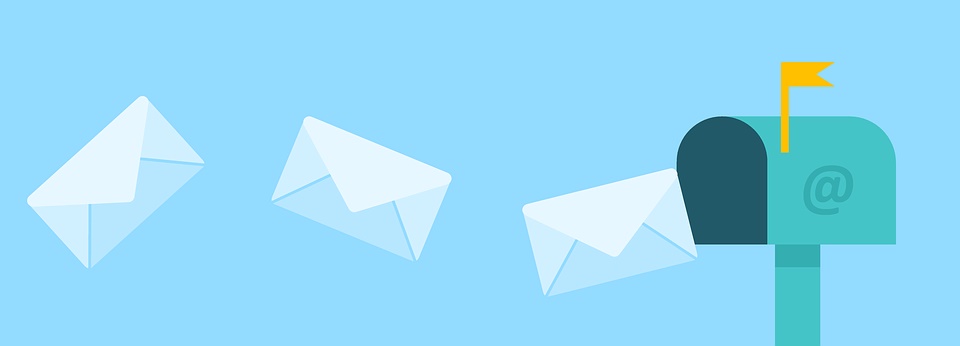Delivering an email to your member base is still going to be the most effective way to reach out and communicate. If you can get a subscriber to open your email, your content becomes their sole focus for those precious seconds where they decide whether or not to read on. With forever replenishing news feeds and high-bandwidth media consumption found on most digital channels, the inbox presents a real and rare opportunity to engage with someone in a private and protected space. Email marketing is often the primary gateway to fresh content such as news articles, events and social media.
The Direct Marketing Association's 2017 email benchmarking report shows that email marketing from the third sector receive the worst open rates of all.
It’s no surprise, therefore, that the volume of email marketing continues to grow within the third sector. In fact, a recent report from across the pond showed an increase in association email marketing volume of 12.3% compared to last year. Unfortunately, this increase in volume doesn't always result in more engagement between associations and their communities. The Direct Marketing Association's 2017 email benchmarking report, shows that email marketing from the third sector receive the worst open rates of all. A mere average of 6% emails opened was reported, compared to 21% for the travel sector.
But never fear, Senior is here! Follow these 8 steps to improve the efficacy of your email marketing efforts:
Does your content live up to a member's reasons for being part of your organisation?
Members are motivated by an association's desire to achieve social goals, whether you’re hoping to improve public welfare, quality assurance or economic well-being. Whatever your aim, remind members that this is why your organisation exists and show them what you have done to pursue these goals. In addition, there will always be a personal benefit to becoming part of your community. If your content adds to these benefits, your recipients are going to want to read it.
Have you gained their email marketing consent?
There are three factors to mention here. Firstly, you need a legal basis to send email marketing. This is defined by PECR and ePrivacy regulations. Secondly, you need a legal basis to collect and process personal data for marketing purposes. This is defined by the DPA and GDPR. This is the law, and you can't really argue with the law. But finally, and most importantly, without specific, informed, and unambiguous consent, you are likely going to be classed as spam. Spam, as defined by any major ISP, is any email received that was unexpected, not wanted, or 'the recipient thinks it is spam, therefore it is spam'. If your emails get classed as spam, you are not going to get into a recipient’s inbox, and if you aren't going to get to the inbox, then you might as well chuck that marketing budget out the window, because it will have the same effect.
Read more... How will the GDPR affect membership organisations in the UK & beyond?
Get personal... but don't creep them out.
Personalisation makes emails more relevant to the individual, and the more customisation and granular targeting of content you can do, the better that relevance will be. This is only true if you are able to do this without the recipient recognising it. Because, Jonathan, if your name is Jonathan, then me repeating the name Jonathan is going to start to get a little annoying, Jonathan... Equally, if you start saying things like "I noticed you reading article X, Y, Z, do you want to read article W?" it just gets a little too creepy and the reader will get put off by this invasion of privacy. On the other-hand, saying "Hey Jon, have you read article W? It's great!" captures the power of personalisation without the Big Brother effect.

Are your emails designed to be opened up on mobile devices?
If you don't know already, mobile devices now dominate the email channel, meaning more people open up their emails on their mobile devices than on a desktop. So, design that email template for mobile devices FIRST and then think about acceptable desktop compatibility. Nine times out of ten, an effective mobile email design is going to be an effective desktop design due to the way most desktop clients preview emails.
Are your call-to-actions clear, simple and friendly?
The Paradox of Choice. We have too many choices and too little time to do what is really important in everyday life. Don't make your email content tricky to understand; too much choice will lead to less overall clicks, and the value of these clicks will diminish. Ensure content is driven and focused towards clear call-to-actions.
What is ‘Marketing Automation’?
Automation – the next-level marketing – allows you, the marketer, to do those actually value-adding tasks such as doing the reports, analyzing and strategising. Marketing automation tools open up possibilities that will help organisations move away from those mass mailings that are often far too generic to even spark Jo/e Public's interest. Marketing automation works well when the member's life-time value is defined and profiled. If you trigger emails at key events or points of engagement within those life-cycles, you'll see a significant difference in your open rates.
Are your emails seeing good deliverability and inbox placement?
Deliverability by now, should be a problem of the past. If you aren't seeing deliverability above 98% then you are facing two problems. The first is, you haven't listened to point number 2 and you have become SPAM. The second problem is; you need to find a new email service provider. Because a good provider should have kicked you off their platform for your spammy ways. Inbox placement, however, is all about engagement. All the top ISPs (Gmail, Outlook, and Yahoo!) weight recipient interaction heavily in their algorithms, so make sure a significant percentage of your subscribers are doing something when they open up your email. If this isn't the case, then think about reducing volume and further segmenting your subscribers to increase content relevance.
Are you measuring the right metrics?
Most email marketers measure click through rates and open rates on either a per campaign basis, or per email sent. This is a good start, but there are often external variables that affect the variation of these metrics at this level. Day and time can have a huge impact on these metrics, but day/time optimisation may not be an option for particular campaigns. Focusing on unique subscriber engagement over a period of time (a month, for example) is far more useful. If you can engage with more individuals on a month by month basis, then you know your marketing plan is working. On the same note, measuring subscriber churn over a period is more effective than measuring this on a campaign level. Ultimately, the goal of any email marketing strategy will be to instigate a revenue generating action. Measure the actions that happen after an email has been clicked and check to see if your readers are more likely to act on those goals than those that haven't read your email.
Email marketing isn't going away any time soon. The death of email has been prophesied on many occasions in the past, but no Facebook, Twitter, Snapchat or even the Apple Watch is going to bring this channel off its roost; it still brings the biggest return on investment over any other channel today. Granted, it is a lot harder to get to the inbox, and strict laws mean you have to be careful if you do want to send emails. If you follow the 8 tips above and focus on always driving value to the subscriber, you won't be left wondering whether or not your emails are worth all that time and effort to put them together.
View more like this: Seasonality in design: getting into the spirit
Want to receive monthly articles and updates containing advice and inspiration for the membership, nonprofit and charity community? Why not subscribe to Senior's mailing list?